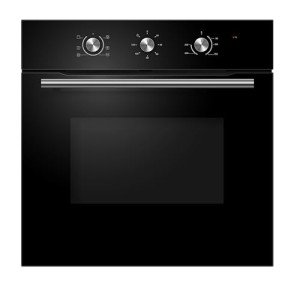Understanding Built-in Ovens and Hobs: The Perfect Kitchen Combination
As modern-day cooking areas progress, built-in appliances are becoming increasingly popular for both functionality and looks. Amongst these appliances, built-in ovens and hobs stand out as important parts for any culinary lover or home cook. This article explores the benefits, features, and factors to consider surrounding built-in ovens and hobs. It likewise deals with typical questions, using a comprehensive guide to these kitchen essentials.
What are Built-in Ovens and Hobs?
Built-in ovens are integrated into kitchen cabinets, producing a sleek, smooth look. They come in various types, consisting of traditional, convection, and steam ovens, each dealing with different cooking approaches. Hobs, on the other hand, are the cooking surface areas that integrate with the kitchen counter top. They can be gas, electric, or induction, allowing cooks to choose based on their cooking design and energy choice.
Advantages of Built-in Ovens and Hobs
- Space-Saving: Built-in designs maximize kitchen area by removing the need for freestanding systems, developing an open and airy environment.
- Visual Appeal: Their streamlined style contributes to a contemporary, structured look in the kitchen.
- Enhanced Functionality: Built-in ovens typically include sophisticated cooking innovation, providing a series of functions like self-cleaning and smart controls.
- Personalization: Manufacturers provide a variety of finishes and designs, enabling property owners to customize their appliances to match their kitchen design.
Types of Built-in Ovens
1. Traditional Ovens
Standard ovens utilize convected heat from the bottom and can be ideal for baking.
2. Convection Ovens
Stove have a fan that distributes hot air, guaranteeing even cooking. They reduce cooking time and are perfect for roasting meats or vegetables.
3. Steam Ovens
Steam ovens utilize damp heat to prepare food, preserving nutrients and flavors. They are becoming increasingly popular amongst health-conscious cooks.
4. Microwave Ovens
These ovens supply fast heating and cooking and serve different functions, from reheating leftovers to baking.
Types of Hobs
1. Gas Hobs
Gas hobs use gas or propane for cooking. They supply immediate heat control, making them a preferred amongst professional chefs.
2. Electric Hobs
Electric hobs have solid or ceramic surface areas that heat up by means of electric coils. They are simple to tidy however might take longer to heat than gas models.
3. Induction Hobs
Induction hobs utilize electromagnetic energy to directly heat up pots and pans, providing quick heating and energy performance. They cool off quickly and offer a safer cooking experience.
Elements to Consider When Choosing Built-in Ovens and Hobs
When picking built-in ovens and hobs, a number of aspects must be considered:
1. Area Limitations
Step the offered space in your kitchen to ensure that the appliances will fit effortlessly into the cabinets.
2. Cooking Style
Consider your cooking routines. If you often bake, a stove might be ideal. On the other hand, induction hobs are terrific for safety and efficiency.
3. Budget
Pricing varies significantly based upon features and brand names. Setting a budget plan assists limit the options.
4. Energy Source
Determine whether you want gas or electric appliances. This decision can impact cooking efficiency and energy costs.
5. Aesthetic appeals
Pick finishes and designs that match your kitchen's design. Stainless-steel is a popular option for a modern-day appeal.
Comparison of Built-in Ovens and Hobs
| Feature | Built-in Oven | Built-in Hob |
|---|---|---|
| Type | Convection, steam, and so on. | Gas, electric, induction |
| Cooking Versatility | High | Moderate to high |
| Cleaning Ease | Differs by model | Normally easy to tidy |
| Setup Style | Integrated in kitchen cabinetry | Flush with counter top |
| Energy Efficiency | Differs by model | Induction normally most efficient |
Frequently Asked Questions About Built-in Ovens and Hobs
1. Are built-in built-in oven and induction hob package than freestanding models?
Yes, built-in ovens normally feature a greater cost due to their style and setup requirements. Nevertheless, they often use advanced functions.
2. Can I change my existing freestanding oven with a built-in design?
Yes, it's possible to change a freestanding oven with a built-in model, but you may need to make changes to your cabinets and kitchen layout.
3. What maintenance do built-in ovens and hobs require?
Regular cleansing is essential. Lots of built-in ovens come with self-cleaning features. It's likewise crucial to keep the hobs without spills and grease.
4. Are induction hobs safe for households?
Induction hobs are considered much safer than gas or electric options because they just heat the cookware, decreasing the danger of burns or mishaps.
5. How can I maximize the performance of my built-in oven and hob?
To take full advantage of effectiveness, always preheat the oven when needed, use the appropriate size pots or pans on the hob, and consider utilizing the recurring heat from your hob after cooking.
Built-in ovens and hobs offer numerous advantages, making them popular options for modern kitchens. Their space-saving styles, advanced features, and aesthetic appeal add to their high demand. By thinking about aspects like area, cooking design, and budget plan, house owners can choose the ideal combination of appliances that best fit their cooking needs. Whether through gas, electric, or induction hobs, and a variety of oven types, the right built-in kitchen appliances can improve the cooking experience while raising the overall visual of the kitchen.

